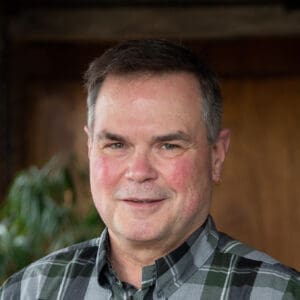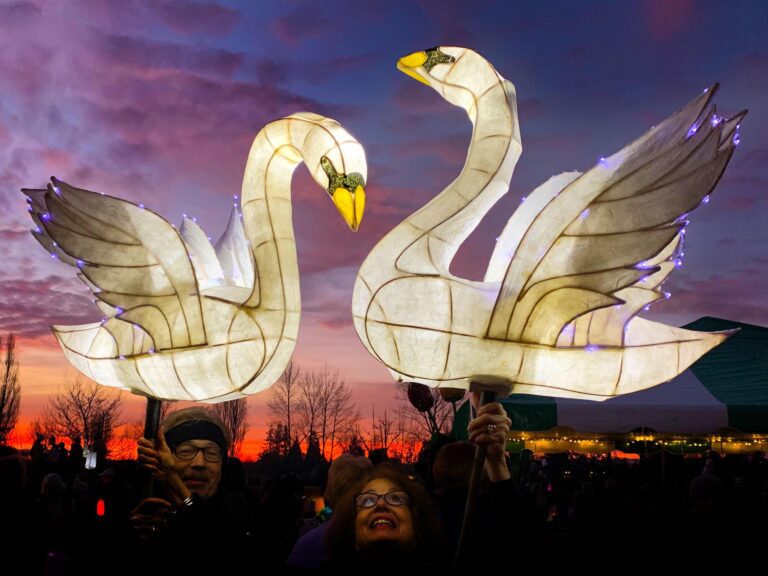Three things are certain about the water-adjudication process for the Nooksack River basin, building industry official R. Perry Eskridge told a local crowd this week:
Nobody will be happy with the outcome when it’s all settled, said the government affairs director for the Whatcom Building Industry Association. Ignoring the problem won’t make it go away.
And for him personally, “I won’t care what the ending is, because I’ll be dead.”
The last line drew a laugh, but it rings sadly true. The region is about to embark on a journey into a legal abyss, depth unknown. But everyone expects the process of determining who gets what water and when from the Nooksack to be complex and painstakingly slow.
A precedent, splitting up water rights in the Yakima River drainage, took four decades. And that was a simpler legal process, dealing only with surface water.
What’s at stake? Just the very character of life in our little top-left corner bubble; chiefly, our endearing, arms-length proximity of urban … uh, sophistication and pastoral charm.
That was a consensus at a panel discussion about water rights Wednesday, Jan. 22 at the Bellingham City Club, where Eskridge was joined by an attorney and reps for family farmers, the local greenies and Lummi Nation — the major groups helping steer claims for some 30,000 potential water claimants.
Two big-pic takeaways emerged from this informative, and surprisingly frank, discussion: All four spokesmen were sitting shoulder to shoulder in front of an interested lunch crowd and agreed, amicably, on many points. For that, given the low bar for discourse in 2025 America, we can all be grateful.
But any resulting warmth was swept aside by the cold realities of our water supply, which for all groups engender a palpable sense of futility. We’re careening toward a seasonal water scarcity that largely takes the current generation’s local future out of our hands.
This is not by design; it’s simple supply and demand.
Even with our wet climate, there’s scarcely enough water here during our dry season today to allow agriculture, growing residential use and heavy industry needs to coexist with healthy salmon runs. That crunch will only escalate as population booms.
Nobody disputed those points at the City Club presentation, as evidenced by these highly condensed comment summaries:
One certainty: More people
Eskridge, serving as grim reaper for those still wishful for short-term solutions to housing affordability, laid out the numbers: Planners expect Whatcom’s population to grow in 20 years from 235,000 to about 293,000 — a figure not including a highly likely steady influx of newcomers fleeing the ravages of climate change.
Up close: Ferndale, watered by two wells of unknown resilience, will gain 6,000 folks; Lynden 10,000; Bellingham at least 30,000. They’ll need tens of thousands of new housing units and they all suck up water.
Likely uptake: In 20 years, Bellingham’s current regrettable status as the eighth-least affordable city in the state (beating out even Seattle) might by then seem like the good old days.
Farmers: Voting with their boots?
Fred Likkel, of Whatcom Family Farmers, did his best to emphasize his folks’ willingness to seek solutions. But he left attendees strongly questioning the ability of agriculture to remain a central part of Whatcom’s economy — and its culture, a factor too often overlooked inside Bellingham city limits.
Local farmers already find it difficult to compete with global competitors on price, he said. The water rights uncertainty drapes over farmers’ existing queasiness like a death shroud.
Reactions of county farmers, Likkel said, follow one of three paths: Fight, flight or freeze. A handful of large growers have lawyered up and will fight. Many others are in “freeze” mode, just sort of hoping the problem goes away.
But the flight group is already flapping its wings, he warned.
“Very few farmers are looking at a future in Whatcom County,” he said. “There’s no guarantee of success.”
Enviros: Face climate facts, mitigate dangers
Ander Russell, co-executive director of local green group RE Sources, talked about short-term vision perhaps curbing long-term pain: It starts with getting real with climate change, which “doesn’t care whether you believe it or not,” and taking preventive measures such as protecting existing wetlands, they said.
Russell, notably speaking on Treaty Day, emphasized that RE Sources and other groups begin with the principle that local tribes, by nature of what’s right and by the 1855 Treaty of Point Elliott, which predates Washington state, are first in line for water rights.
Tribes: Water is life
That, of course, is the position of the tribes, said Victor Johnson, deputy director of Lummi’s Natural Resources Department. The region’s original inhabitants were promised an economically viable homeland in their treaty, “and that includes water,” he noted. Further, the 1974 Boldt Decision reinforced the tribes’ legal right to harvest salmon, which need water to survive, he said.
Notably, no one at the table disagreed with that — at least outwardly.
Big help wanted — and likely required
Where does all that leave us? In a hole that’s going to become familiar digs. Realistically, the adjudication’s first steps — defining the water rights of tribes and figuring out the groundwater puzzle — are likely to take a decade or more, said Bob Carmichael, an attorney who represents Lynden and others in the legal case.
Beyond that: There’s just not enough water to go around and keep life here the way it is, he suggested, drawing nods across the table. Climate change, our likely snowpack killer, will make that worse.
Then he spoke the unspoken part: The only likely solution is big-scale, high-cost investment in a system to store water, keeping our copious winter flows available for year-round use. It’s doable, but at great cost (i.e., big federal assistance, currently laughable) and likely environmental controversy.
Buckle up.
Ron Judd's column appears weekly; ronjudd@cascadiadaily.com; @roncjudd.





